| View previous topic :: View next topic |
| Author |
Message |
jorge santos garcia
Joined: 06 Jan 2008
Posts: 34
Location: Évora



|
 Posted: Apr 09, 2013 18:05 Post subject: Re: A Scientific and mineralogical trip to the Iberian Pyrite Belt - (6) Posted: Apr 09, 2013 18:05 Post subject: Re: A Scientific and mineralogical trip to the Iberian Pyrite Belt - (6) |
|
|
Let me share some information about the Iberian Pyrite Belt, as well, complementing the previous data posted by César:
The Iberian Pyrite Belt (IPB) corresponds to an area of Devonian-Carboniferous Superior (380 to 290 million years) volcanic and sedimentary rocks containing massive polymetallic sulfide deposits. This area forms a belt, about 250 km long and up to 60 km wide, trending westwards from near Seville in Spain to west-northwest in South Portugal. Both the eastward and westward extents of the belt are covered by Tertiary sedimentary rocks.
The IPB is arguably the largest and most important volcanogenic massive sulfide metallogenic province in the world. Some of its mineral deposits have been known and mined since the Chalcolithic era such as the Rio Tinto deposit, reaching a high peak of exploitation at roman times, such as in Aljustrel.
Only after the discovery of the large and rich copper-tin orebody of Neves-Corvo (Southern Portugal) in 1977, has the true importance and potential of the IPB become fully appreciated.
The original, pre-erosional amount of sulfides concentrated in about 90 known deposits are estimated at more than 1.7 billion tons. Of this amount, about 20 percent has been mined. This impressive amount of metals, in concentrations that range from small lenses with thousands of tons to giant bodies with hundreds of millions of tons, in such a relatively small area, represents an outstanding global geochemical anomaly of S, Fe, Zn, Cu, Pb, Sn and several other metals.
Three types of sulfide mineralization occur in the IPB: stratiform polymetallic massive sulfide bodies, with pyrite predominant (35-51 % S or 66-96% pyrite equivalent); disseminated polymetallic pyrite bodies usually with less than 35% S, and generally associated with the stratiform orebodies, stockwork, stringer or fissural ore, distinguished by the relative proportion of sulfides and silicates, and with sulfur contents from 5-25% (10-25% pyrite equivalent).
Among the very large deposits, several are considered giant (more than 50 million tons), such are the cases of Tharsis (>100), La Zarza (>100), Los Frailes-Aznalcóllar (>110), Sotiel-Migollas (>100); and three super-giants (more than 200 million tons): Rio Tinto (>290), Neves-Corvo (>270) and Aljustrel (>230).
The average composition of known resources and reserves is: Cu - 1.3%; Zn - 2.0%; Pb - 0.7%; Au - 0.5 g/t; Ag - 26 g/t; S - 45%; Fe - 40%.
The bulk of the mineralogy in massive sulfide bodies comprises fine to medium grained pyrite, with variable amounts of sphalerite, chalcopyrite, galena (and cassiterite at Neves-Corvo). Tetrahedrite-tennantite, arsenopyrite, bournonite and pyrrhotite are common, and many other minerals have been identified in small and trace amounts. Tin minerals, cassiterite and Cu-Zn-Sn sulfides (stannite-kesterite, mawsonite and stannoidite) are present in most deposits, and reach extremely high concentrations in the tin and copper-tin ores at Neves-Corvo.
This information was based on: Introduction to the Iberian Pyrite Belt. Fernando J.A.S. Barriga, Delfim de Carvalho and António Ribeiro. F.J.A.S. Barriga and D. Carvalho,eds
Geology and VMS Deposits of the Iberian Pyrite Belt. SEG Neves Corvo Field Conference 1997. Guidebook Series Volume 27. © Society of Economic Geologists 1997
|
|
| Back to top |
|
 |
jorge santos garcia
Joined: 06 Jan 2008
Posts: 34
Location: Évora



|
 Posted: Apr 10, 2013 16:41 Post subject: Re: A Scientific and mineralogical trip to the Iberian Pyrite Belt - (6) Posted: Apr 10, 2013 16:41 Post subject: Re: A Scientific and mineralogical trip to the Iberian Pyrite Belt - (6) |
|
|
Some information about Aljustrel mines:
The polymetallic sulphide ore are mainly iron sulphides (pyrite -> 70%) that associate varying proportions of sulfides of copper (chalcopyrite), zinc (sphalerite) and lead (galena). Tetraedrite and arsenopyrite rarely appear. The main gangue minerals are quartz, carbonates and Baryte. There are six mineralized orebodies discovered so far - São João do Deserto, Algares, Moinho, Feitais, Estação and Gavião, occurring in two parallel alignments. The southern alignment is composed by the deposits Gavião, São João do Deserto, Moinho and Algares and the southern alignment is composed of deposits of Feitais and Estação. All this geological structure is cut by the Fault of Messejana, the biggest of the Iberian Peninsula.
The mining activity in Aljustrel goes back at least to Roman times. There’s evidence that at the time of Emperor Adriano (117-138 AD) exploitation was in full operation.
Between 1876 and 1906 a series of bronze plaques were discovered - the Tables of Vipasca (former name of Aljustrel) - dating from 173 AD. They are a code and the laws for operating the mines, having regulations on the administration of mining, the exploitation regime, fines and technical exploitation guidelines.
The Romans and possibly the people who preceded them exploited the masses and surface gossan of São João do Deserto and Algares. This exploitation was so intense that it is known that in some periods of the second and third centuries, during Roman rule, workers at Vipasca Mines reached about 2000 people.
During the Middle Ages the mine was largely abandoned, having been resumed operation in 1845. At the beginning of the 20th century, the operation aimed mainly at obtaining sulfur used to produce sulfuric acid and fertilizers. Copper and silver and gold was also produced.
The orebodies of São João do Deserto and Algares have been exploited during the 1960s, the last one being depleted. In the 1950s was discovered the orebody of Moinho, in 1964 the orebody of Feitais, in 1969 the orebody of estação and in 1970 the orebody of Gavião. The orebodies of Feitais and Moinho were exploited until 1993, the year the mines closed. The veins of Estação and Gavião were never explored.
Feitais orebody is being exploited since 2008 for copper and zinc concentrates.
| Description: |
| Vipasca shaft. Doesn't work anymore. It was recovered for future memory |
|
| Viewed: |
63729 Time(s) |
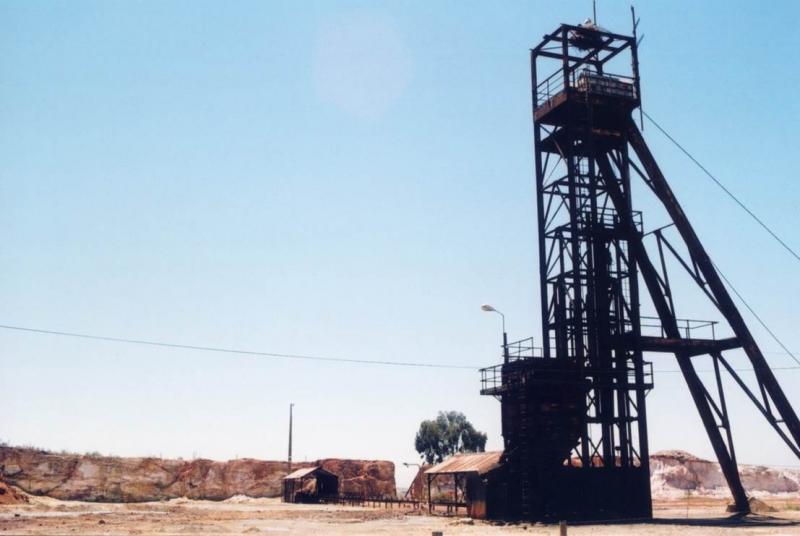
|
| Description: |
| Old cementation tanks for obtaining Sulphur and copper. |
|
| Viewed: |
63763 Time(s) |
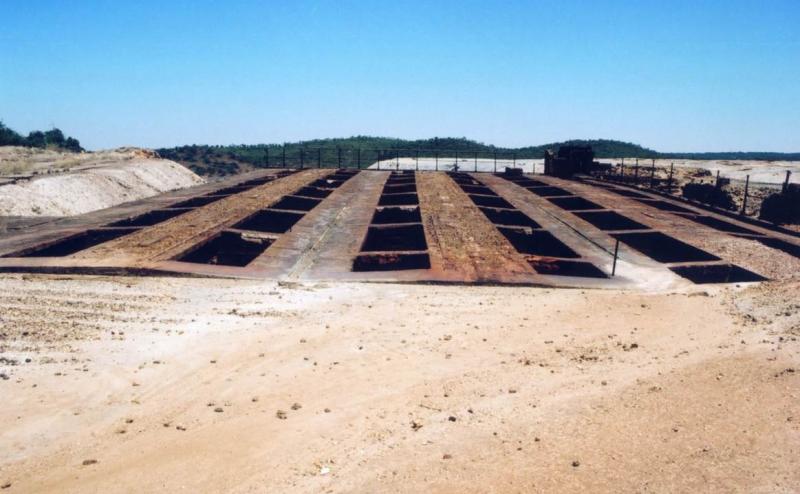
|
|
|
| Back to top |
|
 |
jorge santos garcia
Joined: 06 Jan 2008
Posts: 34
Location: Évora



|
 Posted: Apr 10, 2013 17:03 Post subject: Re: A Scientific and mineralogical trip to the Iberian Pyrite Belt - (6) Posted: Apr 10, 2013 17:03 Post subject: Re: A Scientific and mineralogical trip to the Iberian Pyrite Belt - (6) |
|
|
A few more photos.
| Description: |
| Acidified rain water by running on contaminated soil (pH 1,5 - 3), coloured red by dissolved iron. |
|
| Viewed: |
63775 Time(s) |
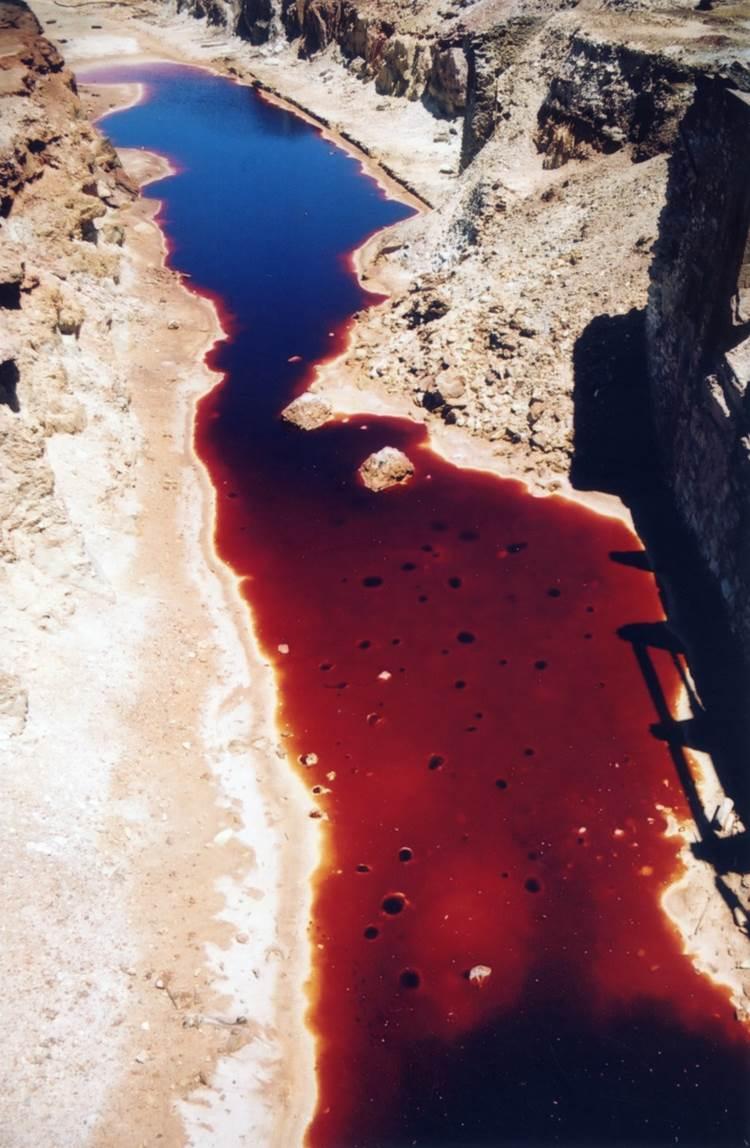
|
| Description: |
| Melanterite stalactites to 50cm high on old adit of Algares Mine. |
|
| Viewed: |
63764 Time(s) |
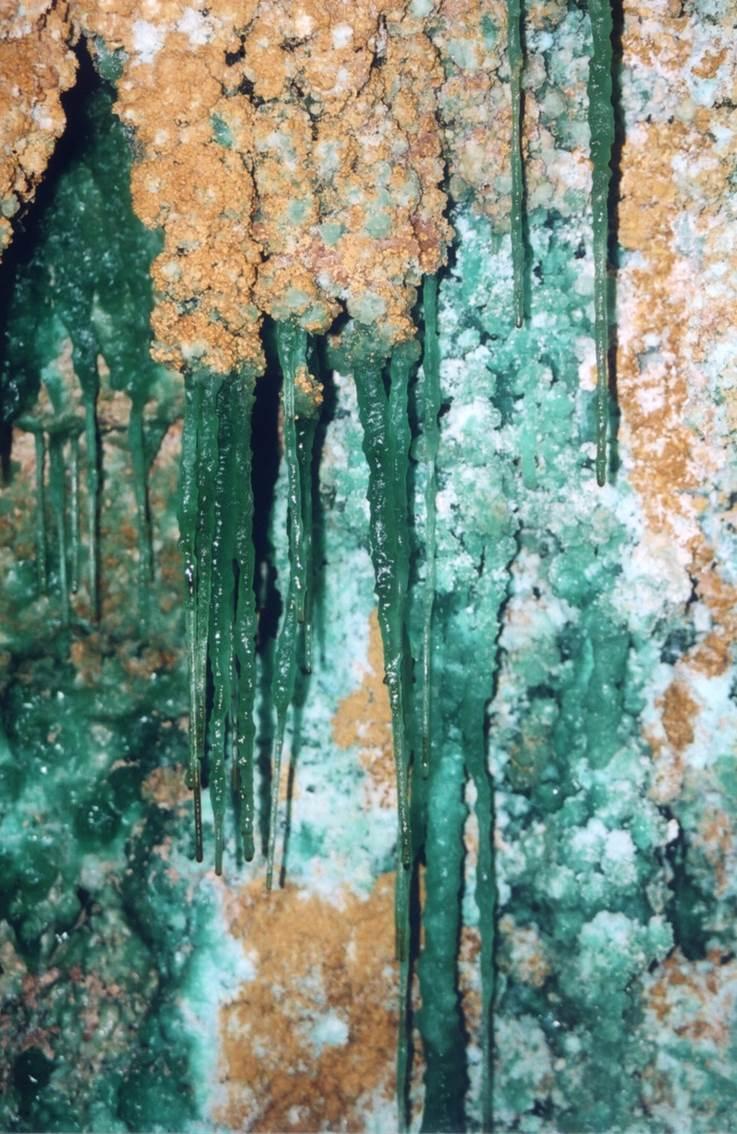
|
| Description: |
| Blue green melanterite, brownish copiapite, white halotrichite-pickeringite crusts on old adit on Algares Mine. FOV +- 20cm. |
|
| Viewed: |
63762 Time(s) |
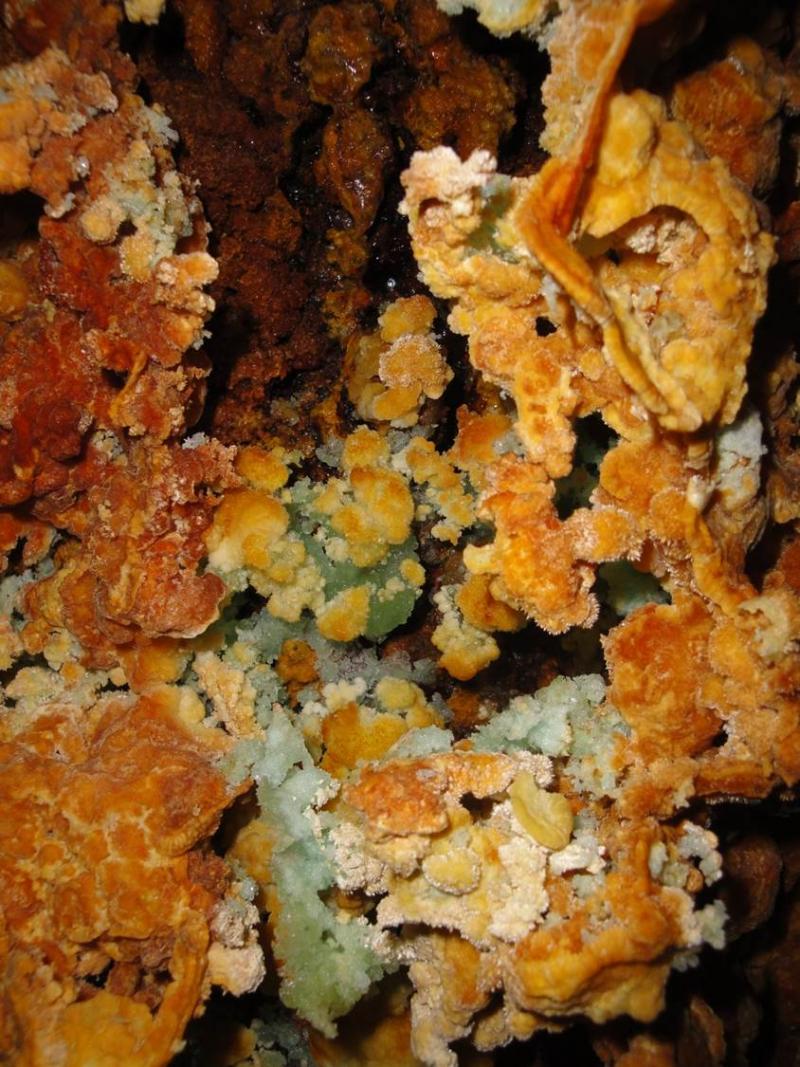
|
| Description: |
| Old specimens at the head office, collected on Feitais Mine (gypsum crystal with almost 20cm, single Baryte crystal on the right with 12-15 cm). |
|
| Viewed: |
63740 Time(s) |
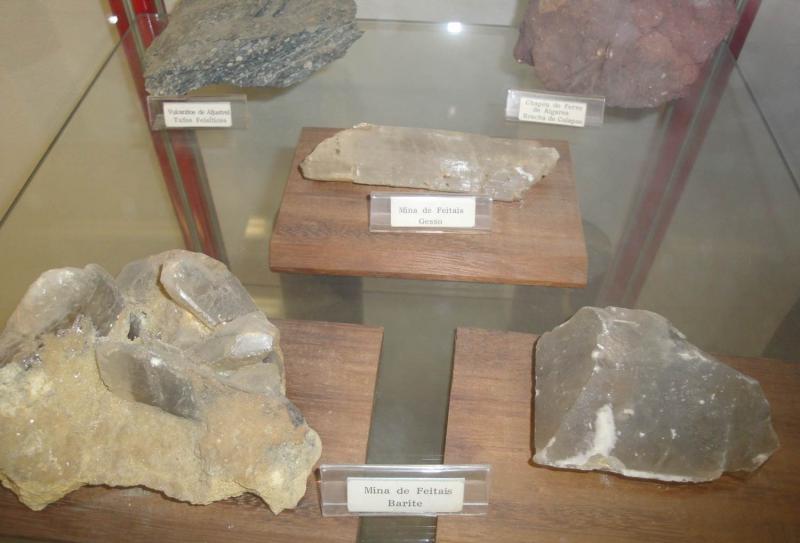
|
| Description: |
| Collecting 330m deep, Feitais mine. |
|
| Viewed: |
63757 Time(s) |
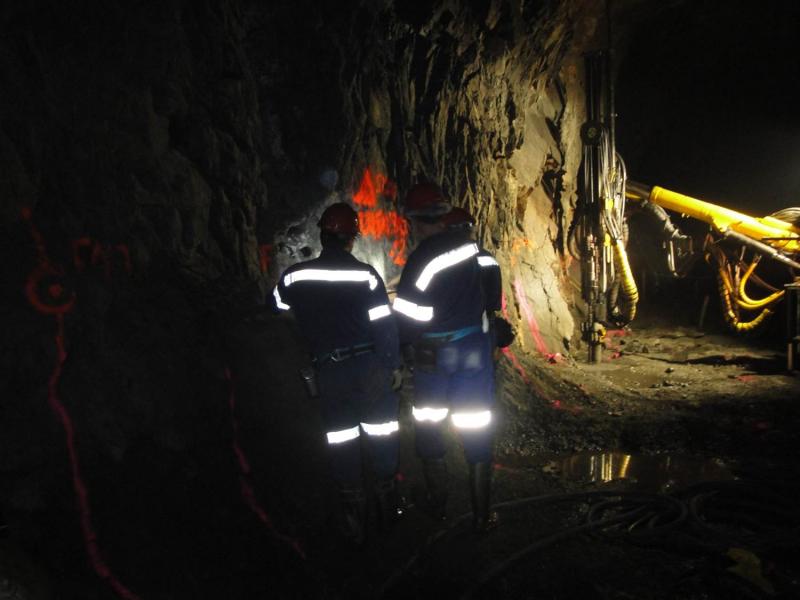
|
| Description: |
| Some of the result - dog tooth calcite crystals to 1,5cm on brownish red dolomite |
|
| Viewed: |
63793 Time(s) |
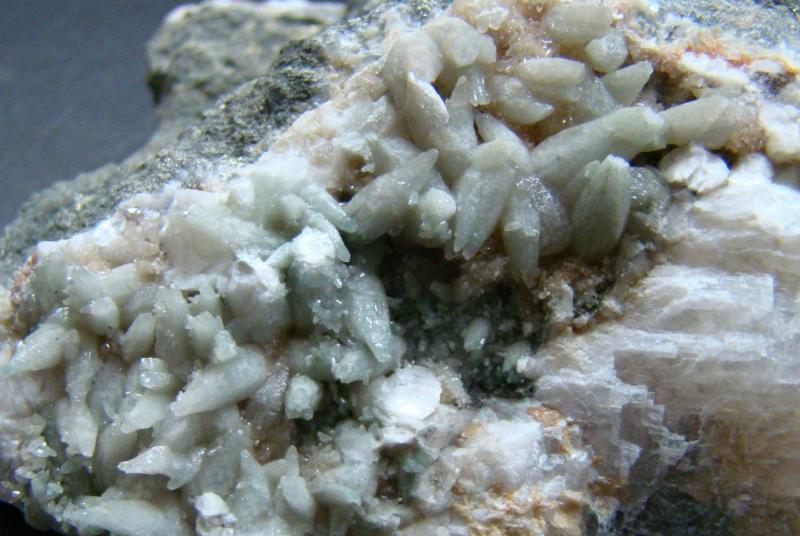
|
| Description: |
| 1.5 to 2m high fault mirror (slikenside) on chalcopyrite rich massive sulfide ore, 250m deep. Feitais mine. |
|
| Viewed: |
63766 Time(s) |
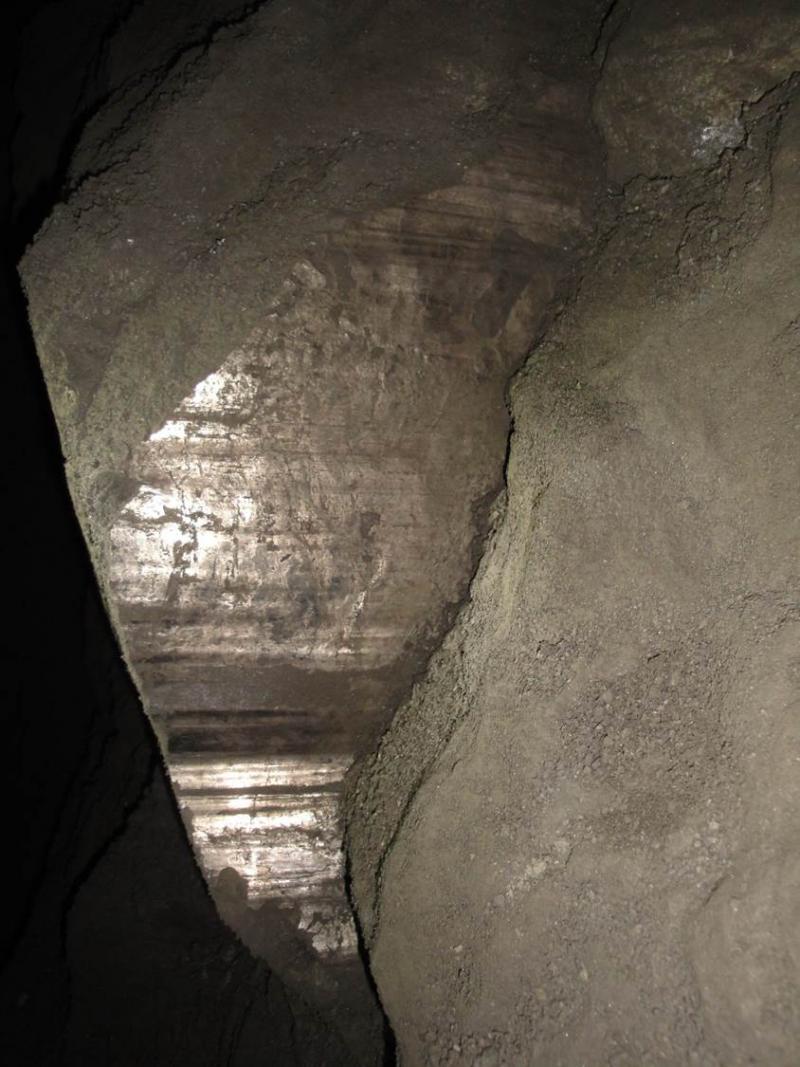
|
|
|
| Back to top |
|
 |
Josele

Joined: 10 Apr 2012
Posts: 410
Location: Tarifa, Spain



|
 Posted: Apr 10, 2013 18:11 Post subject: Re: A Scientific and mineralogical trip to the Iberian Pyrite Belt - (6) Posted: Apr 10, 2013 18:11 Post subject: Re: A Scientific and mineralogical trip to the Iberian Pyrite Belt - (6) |
|
|
Excellent report and very interesting hypothesis for the origin of these deposits, thank you César.
Thanks also to Jorge, your inputs of the Portuguese side provide an overview of the IPB.
_________________
Josele |
|
| Back to top |
|
 |
jorge santos garcia
Joined: 06 Jan 2008
Posts: 34
Location: Évora



|
 Posted: Apr 17, 2013 19:47 Post subject: Re: A Scientific and mineralogical trip to the Iberian Pyrite Belt - (6) Posted: Apr 17, 2013 19:47 Post subject: Re: A Scientific and mineralogical trip to the Iberian Pyrite Belt - (6) |
|
|
Thank you Josele.
And now some information about Neves-Corvo mine:
Neves-Corvo is a modern mine, whose sulphide orebodies of Neves and Corvo where discovered in 1977. It’s exploitation started in 1988. The complex massive sulphide mineralization is constituted mainly by pyrite, chalcopyrite, sphalerite, galena, stannite, tennantite-tetrahedrite and by an array of others sulfosalts. Because the small granulometry of the sulphide massive mineralization, crystals are very rare, and because of the mechanical exploitation the recovery of specimens are even rarer. But sometimes the mine provide beautiful honey coloured baryte crystals, white dolomite and chalcopyrite, tennantite-tetrahedrite and pyrite crystals.
There are 5 orebodies discovered so far:
Corvo is 230m deep and has 1100m long by 600m wide and a maximum of 95m thick. It was discovered in 1977.
Graça is linked to Corvo and has 700m by 500m and a maximum thickness of 80m. it was discovered in 1978 and is mined out. It is exhausted and was the supplier of tin, which is not produced nowadays.
Neves has 1200m by 700m by 55m. it was also discovered in 1977.
Zambujal is a small lenses, discovered in 1979, with low levels of copper and zinc.
Lombador was discovered only in 1988. It goes to 1000m deep and has 750m long and 65m thick. It will be in exploitation very soon and will supply almost only zinc.
There are two more possible orebodies in study – Semblana and Monte Branco.
| Description: |
| Copper rich sulphide wall (FOV 3-4m), 550m deep. |
|
| Viewed: |
63429 Time(s) |
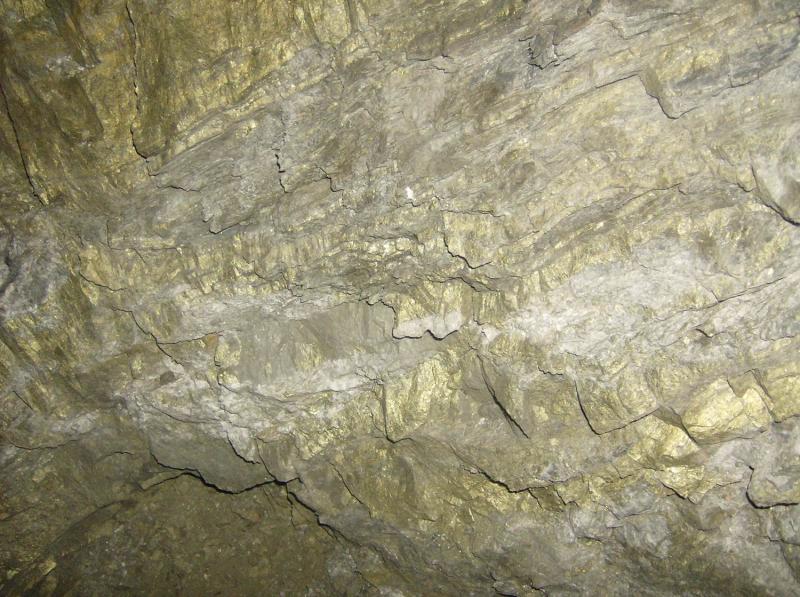
|
| Description: |
| 7 cm specimen of white dolomite with brassy yellow chalcopyrite and greyish pyrite crystals. |
|
| Viewed: |
63365 Time(s) |
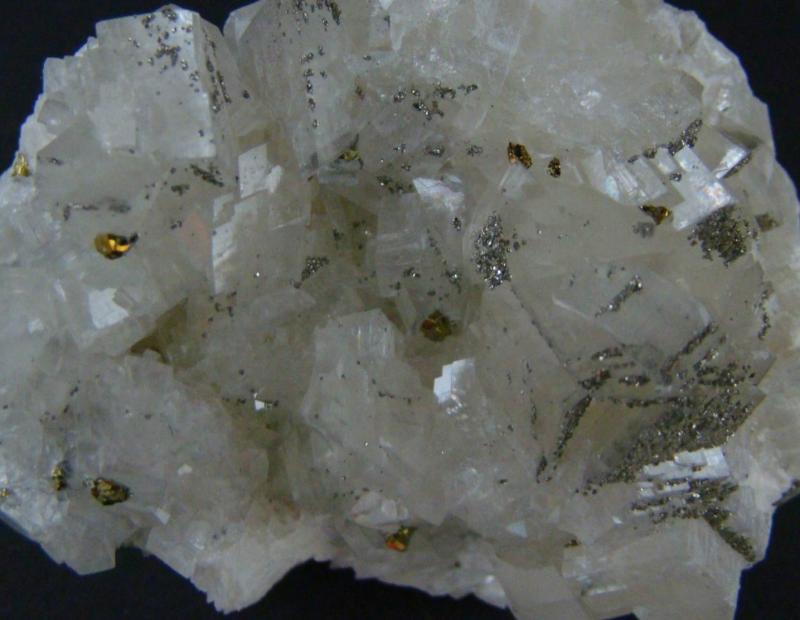
|
| Description: |
| Massive chalcopyrite with a spot of massive galena. 8,5cm |
|
| Viewed: |
63382 Time(s) |
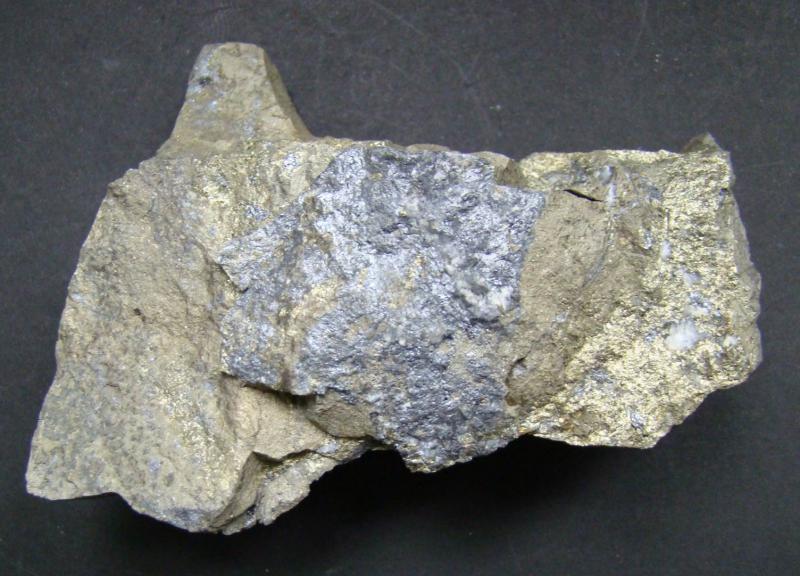
|
| Description: |
| Stockwork sample of chalcopyrite veinlets on schist. 6,5cm. |
|
| Viewed: |
63382 Time(s) |
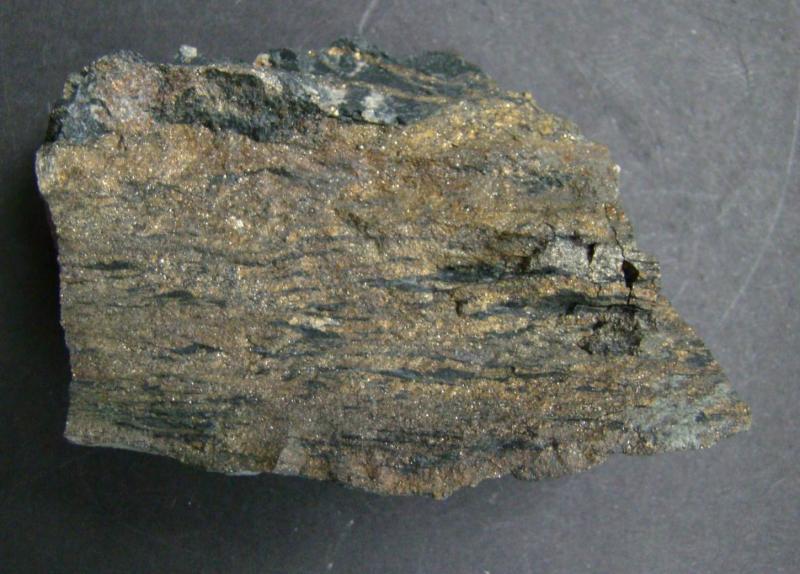
|
| Description: |
| Chalcopyrite crystals with 4mm with white flattened rhombohedral dolomite crystals. FOV - 3cm. |
|
| Viewed: |
63344 Time(s) |
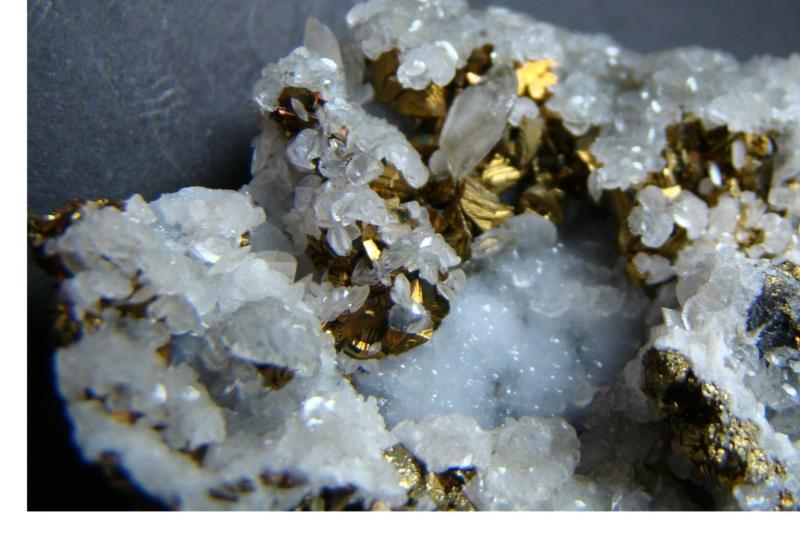
|
| Description: |
| Strange baryte crystal with 4x4cm and an unusual pattern: a bottom rhombus dark golden, two sided light golden rhombus and a white top rhombus. |
|
| Viewed: |
63368 Time(s) |
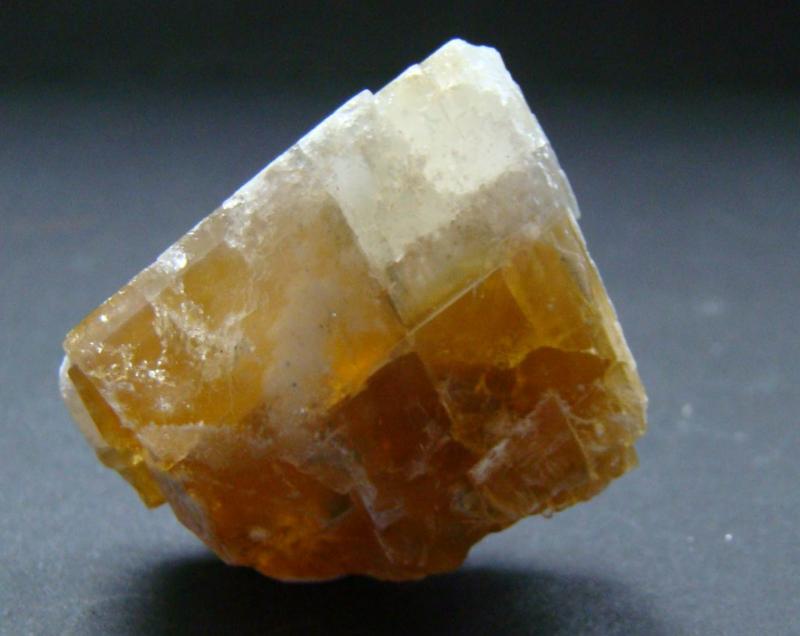
|
| Description: |
| Golden baryte crystals. FOV 9cm. |
|
| Viewed: |
63369 Time(s) |
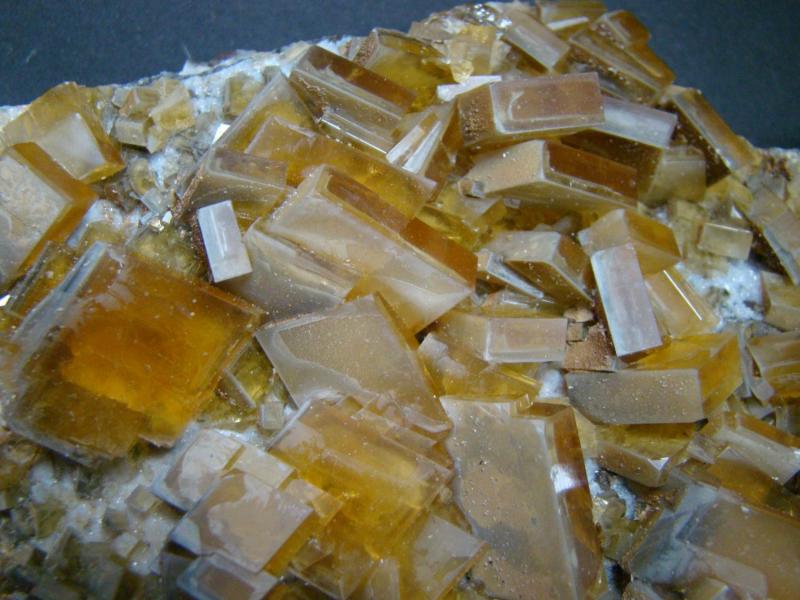
|
| Description: |
| Golden baryte crystals specimen with 17cm. |
|
| Viewed: |
63363 Time(s) |
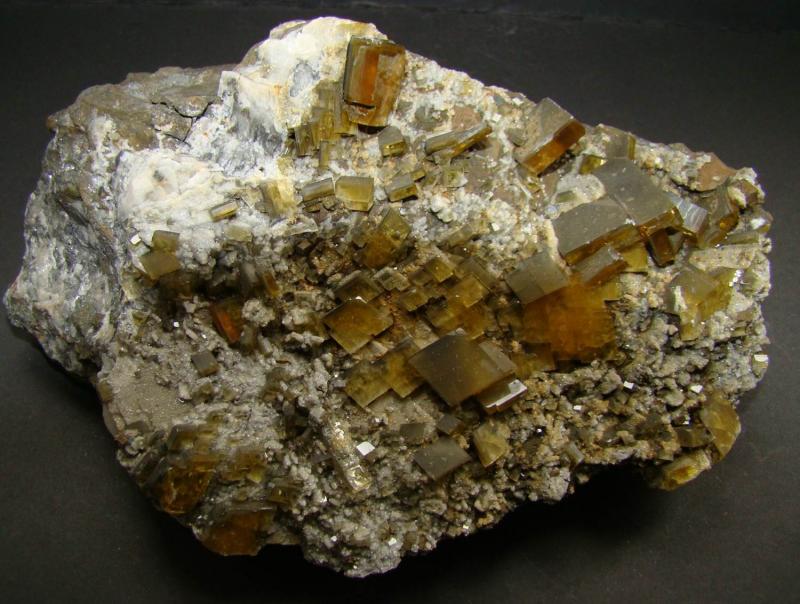
|
| Description: |
| Baryte crystal with 2 cm high. |
|
| Viewed: |
63344 Time(s) |
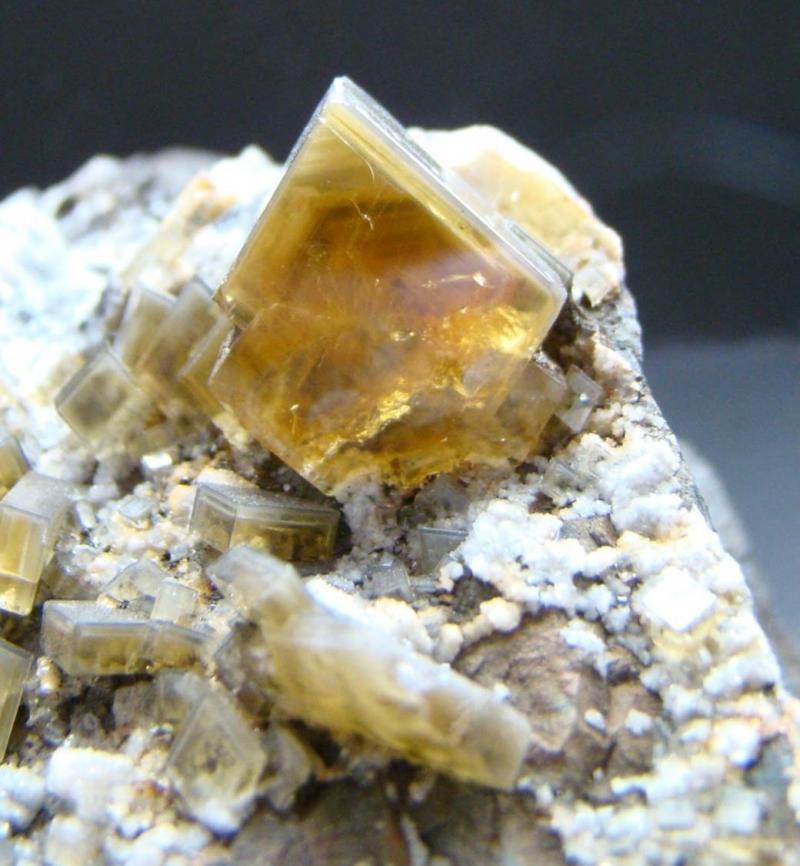
|
|
|
| Back to top |
|
 |
Mark Ost

Joined: 18 Mar 2013
Posts: 516
Location: Virginia Beach



|
 Posted: Apr 17, 2013 20:43 Post subject: Re: A Scientific and mineralogical trip to the Iberian Pyrite Belt - (6) Posted: Apr 17, 2013 20:43 Post subject: Re: A Scientific and mineralogical trip to the Iberian Pyrite Belt - (6) |
|
|
| The Baryte is beautiful. Thanks for tour.
|
|
| Back to top |
|
 |
Cesar M. Salvan
Site Admin
Joined: 09 Jun 2008
Posts: 127
Location: Alcalá de Henares



|
 Posted: Jul 07, 2013 22:13 Post subject: Re: A Scientific and mineralogical trip to the Iberian Pyrite Belt - (6) Posted: Jul 07, 2013 22:13 Post subject: Re: A Scientific and mineralogical trip to the Iberian Pyrite Belt - (6) |
|
|
Here, I pick the tour through IPB up from the last addition about the interesting Neves-Corvo deposit.
As I explained in the beginning of this thread, the IPB deposits could be divided in two types, well differentiated in age and origin of the main mineralization. The Neves-Corvo deposit belong to the "Southern" class of volcano-sedimentary massive sulfide deposits in the IPB. This class of deposit is of interest to our research team, because of its main characteristics:
-shale hosted deposit: The mineralized massive sulfide bodies are included in the VSC (volcano-sedimentary complex), a complex formation that include dacitic-rhyolitic domes, sills, lava flows and volcanoclastics units interbedded with detrital sedimentary rocks, formed between 360-330 Ma.
- Age: The formation of the sulfides begun during late Fammenian (Devonian), in a black mud in a submarine environment and are coincident with the major biological crisis of the D-C boundary.
The origin of the mineral in this type of deposit is still a matter of debate. Some authors suggest that is exhalative, but some evidences suggest that is a brine pool type: the volcanic activity were formed in a small basin that suffered an anoxic episode due to the displacement of seawater by dense and saline hydrothermal fluids. This leads to the precipitation of sulfide, generated by the activity of anaerobic sulfate-reducing bacteria, among others parallel phenomena, as the formation of rich stockworks. The formation of pyrite in the form of fall-out of a very tiny crystals is the explanation to the extraordinary thin grain of massive pyrite in this type of deposits.
The deposits as Neves-Corvo and Tharsis show us a dramatic episode during Earth history: the volcanic activity and climate changes lead to a major ecological crisis and geochemical change that left the massive sulfide deposits as a generous clue.
The Neves-Corvo deposit has some particular features, that differentiate it from others deposits of similar origin, as Tharsis. For example, the contribution of magmatic-hydrothermal fluids to the mineralization, that generate an unique mineral assemblage, very rich in tin (with the presence of about 300000 tons of metal), associated with copper minerals in form of stannite and casiterite, among others rarer minerals. The origin and accumulation of tin is still a not fully resolved question, anyway.
Also, Neves-Corvo is a source of "high-tech" metals, particularly indium and germanium. The chalcopyrite and sphalerite of Neves-Corvo is one of the richest indium sources and this metal is recovered mainly from zinc concentrates. Despite of this indium richness, this metal rarely form visible minerals, observable at microscopic level (roquesite).
Other curiosity: the 23th april of 2013, the mine reached 1000 m deep, being the deepest mine workings in the IPB. To visit this mine is a exciting experience, although, as usual in active mining operations, is not easy to obtain permissions.
Anyway, as usual also in the IPB mines and in general in all volcano-sedimentary deposits, to obtain collectible specimens is very difficult, as Jorge Santos said. The Neves-Corvo mine was a unique case and beautiful crystals of tetrahedrite-group minerals, chalcopyrite, galena and Baryte occasionally appear.
...next chapters: Lousal mine, converted in a beautiful educational and divulgative initiative, and revisiting the most intriguing and complex deposit of IPB: Las Cruces.
| Description: |
Neves-Corvo Mine, Santa Bárbara de Padrões, Castro Verde, Beja District, Portugal
The impressive headframe of Santa Barbara shaft, used for the extraction of mineral. |
|
| Viewed: |
22020 Time(s) |
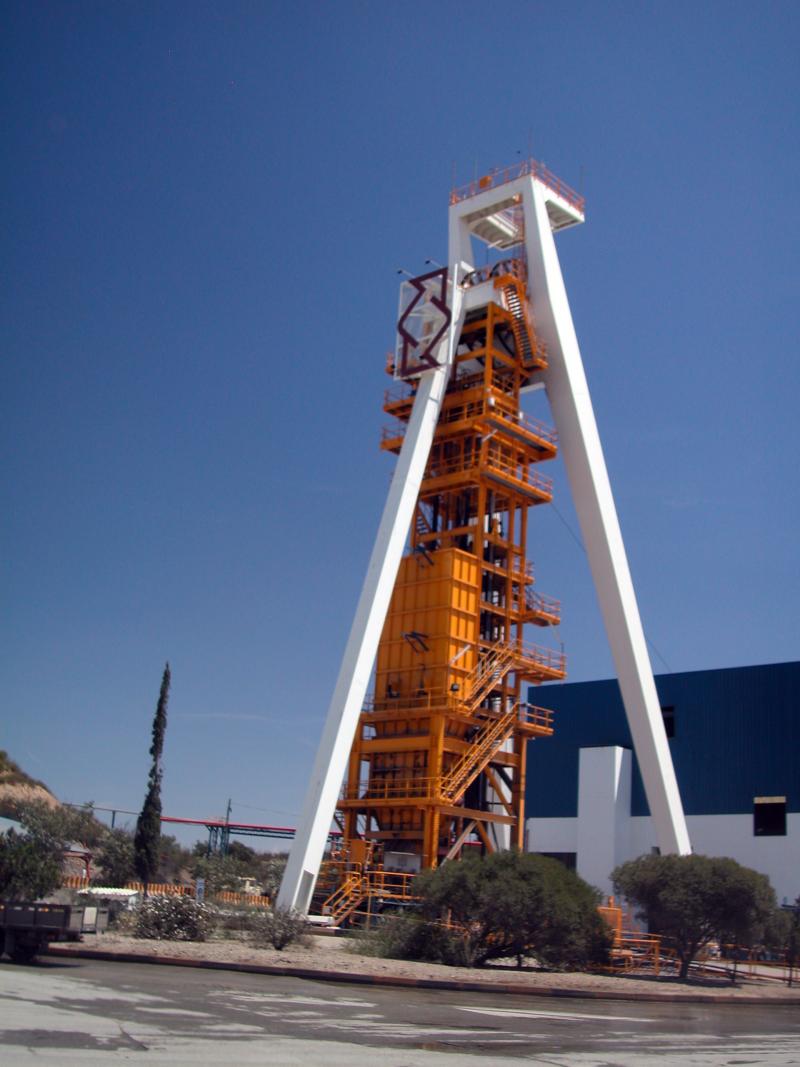
|
| Description: |
Neves-Corvo Mine, Santa Bárbara de Padrões, Castro Verde, Beja District, Portugal
The shores of hell: plaque remembering the day the miners reached the -1000 m level. The climate at that depth is oppressive: 50ºC and 120% humidity in a mist, dark and suffocating atmosphere in spite of air circulation system. |
|
| Viewed: |
22054 Time(s) |
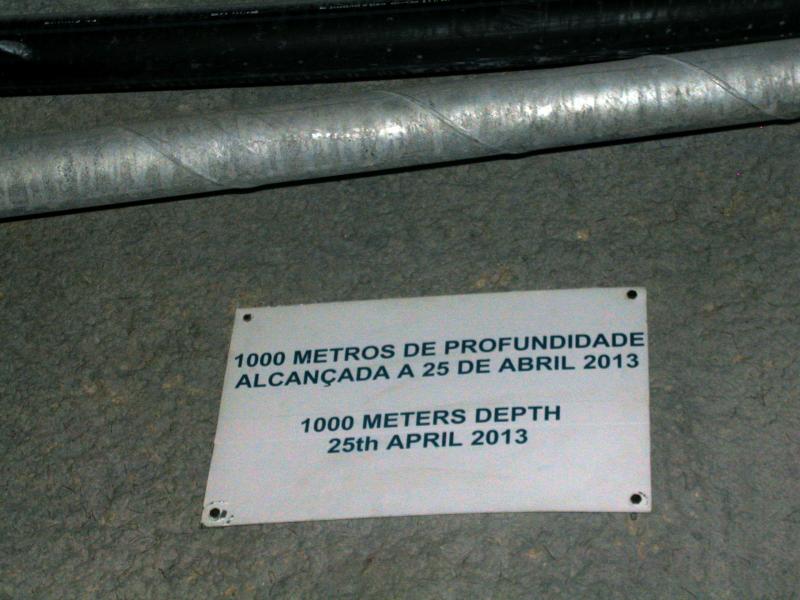
|
| Description: |
Tetrahedrite group
Neves-Corvo Mine, Santa Bárbara de Padrões, Castro Verde, Beja District, Portugal
aprox. 10 cm FOV
Tetrahedrite group mineral taken in situ. The presence of tetrahedrite, tennantite and freibergite (usually in intermediate composition) has been reported. Without analysis of the sample, the correct label is tetrahedrite group or tetrahedrite-tennantite. |
|
| Viewed: |
22018 Time(s) |
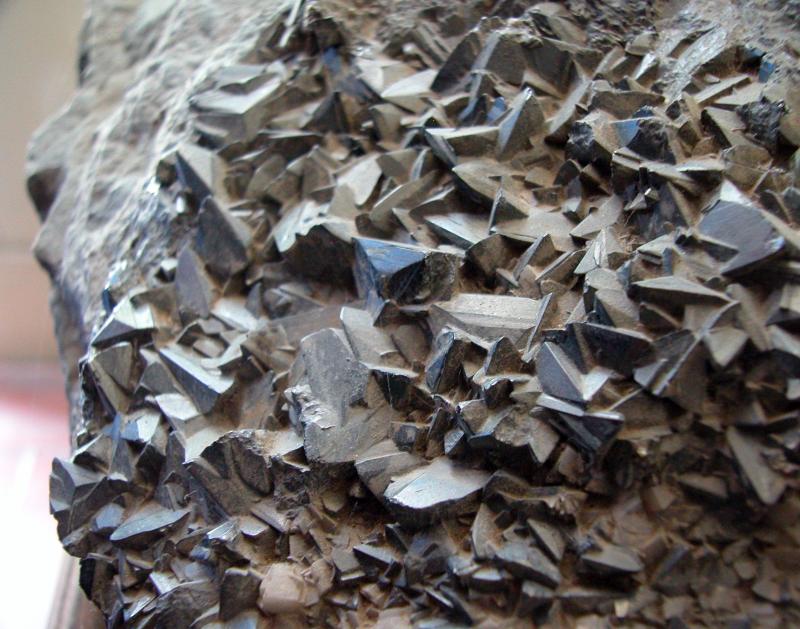
|
| Description: |
Chalcopyrite
Neves-Corvo Mine, Santa Bárbara de Padrões, Castro Verde, Beja District, Portugal
View of a chalcopyrite stockwork in the Lombador orebody. Occasionally, epithermal veins and deformation fractures lead to the formation of crystals of chalcopyrite and other sulfides. |
|
| Viewed: |
22073 Time(s) |
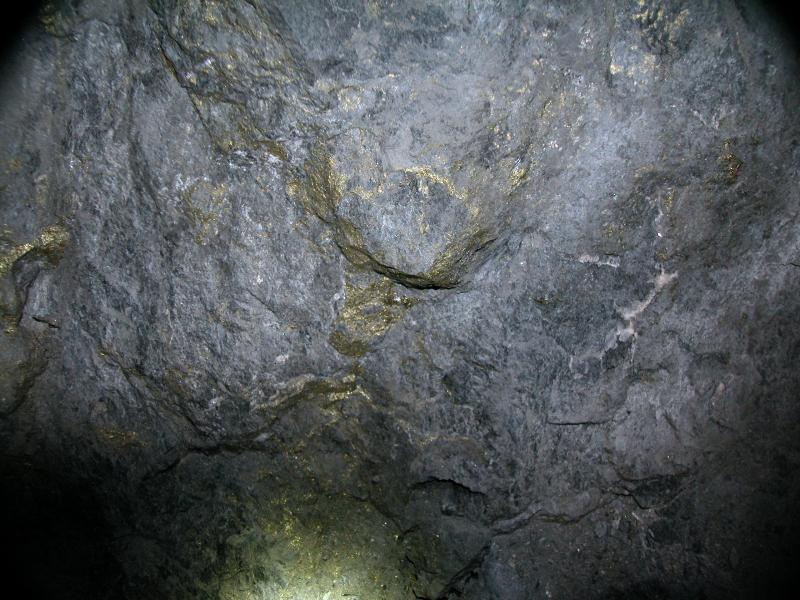
|
| Description: |
Chalcopyrite
Neves-Corvo Mine, Santa Bárbara de Padrões, Castro Verde, Beja District, Portugal
crystal 4.7 mm
Chalcopyrite and carbonate crystals in a closed fracture in shale hosted pyrite stockwork from Corvo orebody. Chalcopyrite is a plastic mineral and tends to flow and recrystallize in fractures. |
|
| Viewed: |
21989 Time(s) |
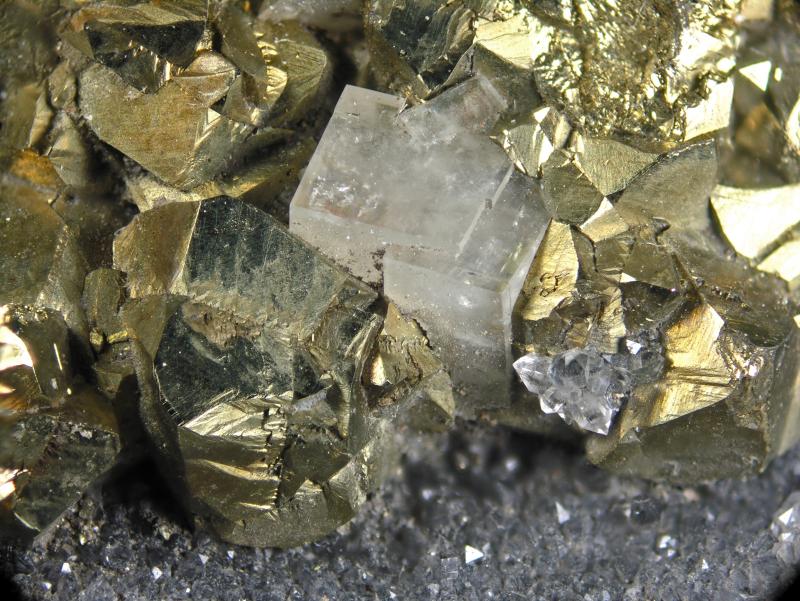
|
| Description: |
Tetrahedrite group
Neves-Corvo Mine, Santa Bárbara de Padrões, Castro Verde, Beja District, Portugal
crystal 2 mm
Tetrahedrite-tennantite crystal surrounded by galena. Some authors suggest that these assemblages in volcanogenic sulfide deposits come from the mixing of hydrothermal fluids with cold seawater, with precipitation of galena-tetrahedrite group association. |
|
| Viewed: |
22061 Time(s) |
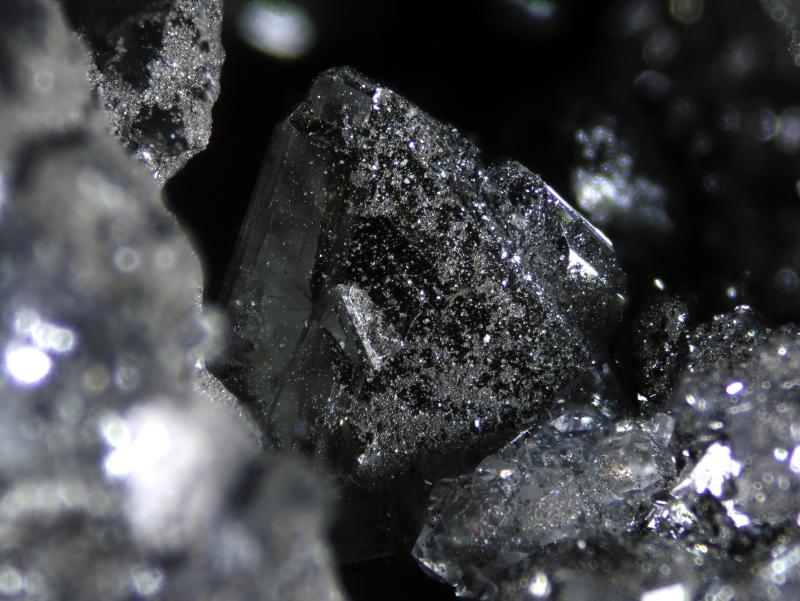
|
|
|
| Back to top |
|
 |
Cesar M. Salvan
Site Admin
Joined: 09 Jun 2008
Posts: 127
Location: Alcalá de Henares



|
 Posted: Jul 12, 2013 19:15 Post subject: Re: A Scientific and mineralogical trip to the Iberian Pyrite Belt - (6) Posted: Jul 12, 2013 19:15 Post subject: Re: A Scientific and mineralogical trip to the Iberian Pyrite Belt - (6) |
|
|
And a little bit more on Neves Corvo mine...we found some rare secondary copper minerals in small fractures in chalcopyrite.
| Description: |
Chalcopyrite, Redgillite
Neves-Corvo Mine, Santa Bárbara de Padrões, Castro Verde, Beja District, Portugal
FOV 0.9 mm
Small balls (aggregates of lath like crystals) of the rare sulfate Redgillite, found in a small fracture of massive Chalcopyrite of Corvo mass. |
|
| Viewed: |
21895 Time(s) |
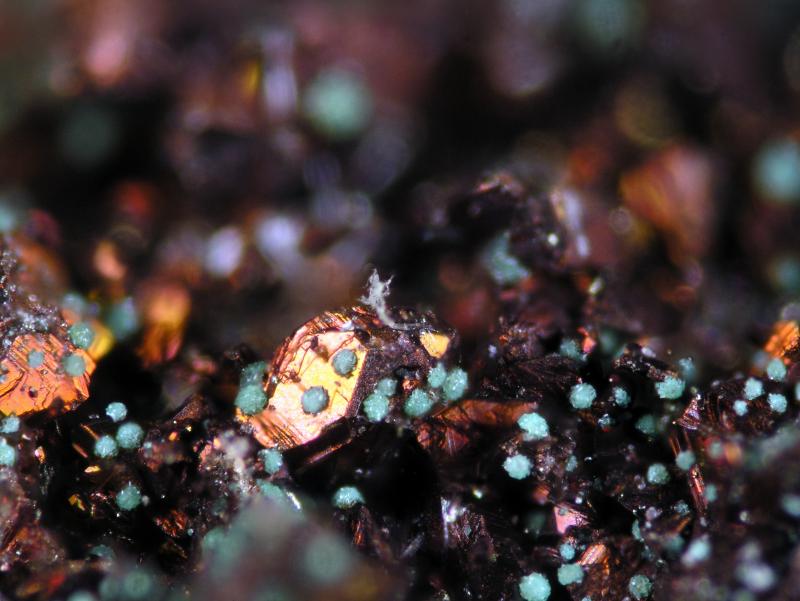
|
| Description: |
Chalcopyrite+undetermined chloride
Neves-Corvo Mine, Santa Bárbara de Padrões, Castro Verde, Beja District, Portugal
FOV 0.9 mm
Crystals of a not fully determined copper chloride (Botallackite?, Bobkingite?) on chalcopyrite. Corvo orebody. |
|
| Viewed: |
21866 Time(s) |
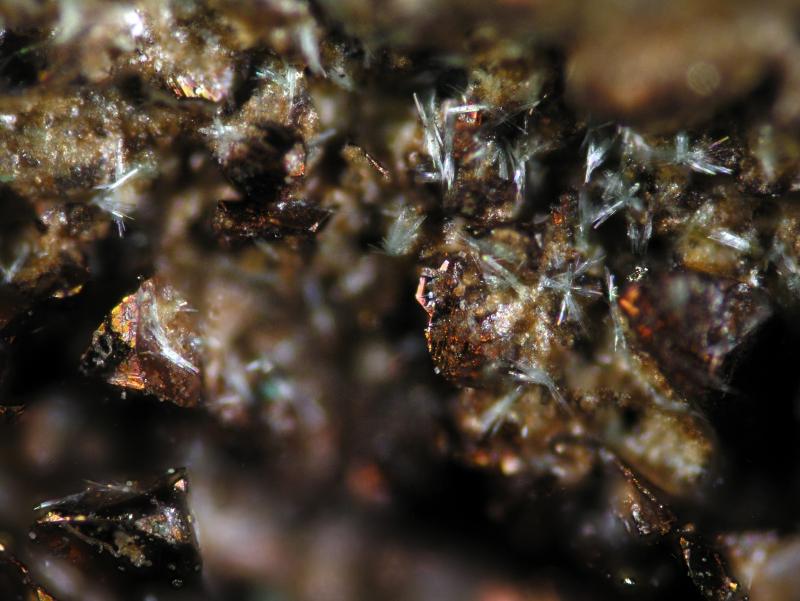
|
| Description: |
Dolomite
Neves-Corvo Mine, Santa Bárbara de Padrões, Castro Verde, Beja District, Portugal
A beautiful SEM image: dolomite, brochantite and copper chloride (Botallackite? Bobkingite?) on chalcopyrite. From the Corvo orebody. |
|
| Viewed: |
21921 Time(s) |
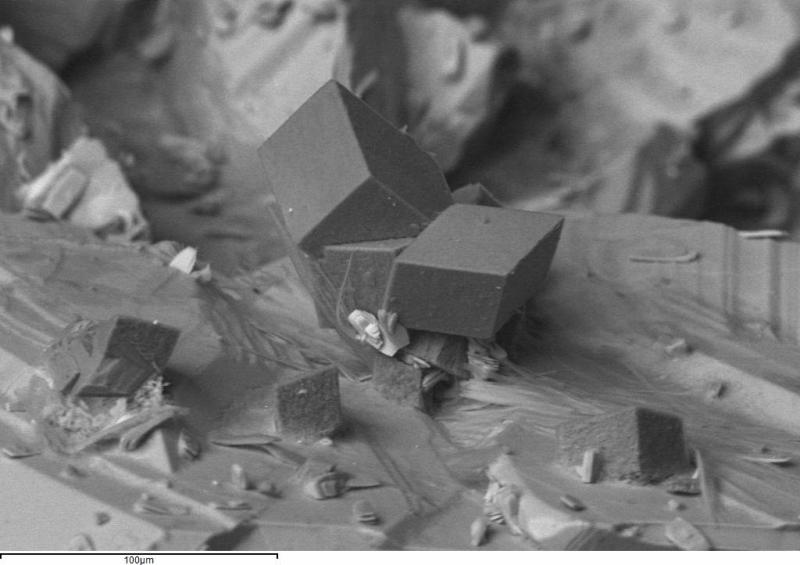
|
| Description: |
Galena
Neves-Corvo Mine, Santa Bárbara de Padrões, Castro Verde, Beja District, Portugal
FOV 2.5 mm |
|
| Viewed: |
21886 Time(s) |
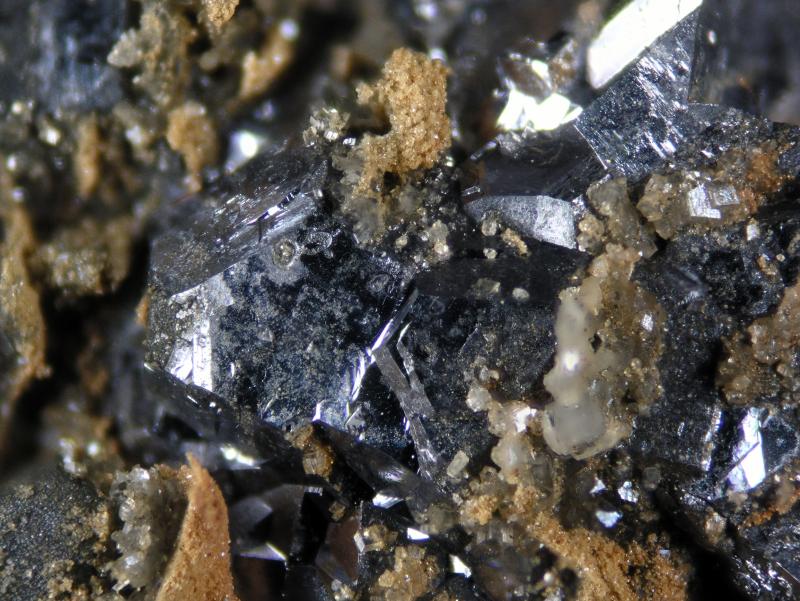
|
| Description: |
Chalcopyrite
Neves-Corvo Mine, Santa Bárbara de Padrões, Castro Verde, Beja District, Portugal
Usually is not the underground workings the best place to study the metallogeny of a mine. Instead, the drill cores gives us better and more complete information about the geology and mineralogy of a mine. In the picture, a chalcopyrite stockwork (a network of ore veins) |
|
| Viewed: |
21935 Time(s) |
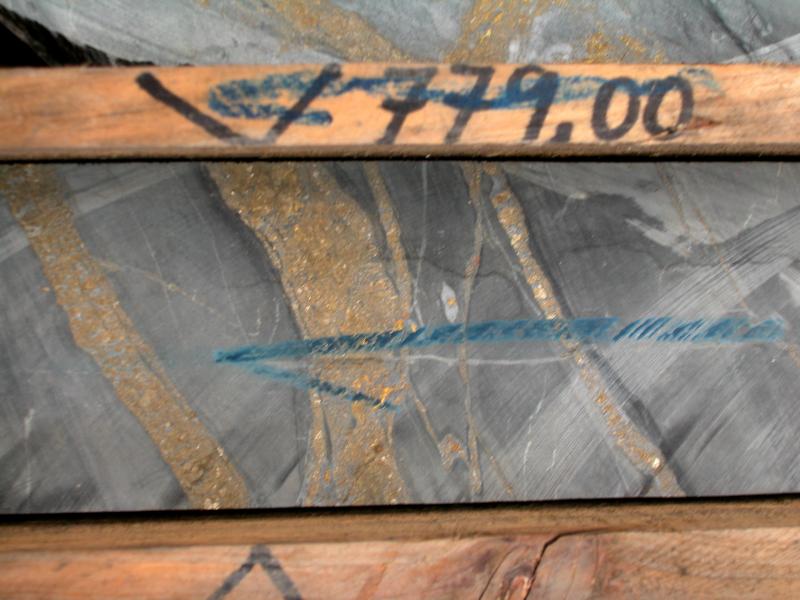
|
|
|
| Back to top |
|
 |
Cesar M. Salvan
Site Admin
Joined: 09 Jun 2008
Posts: 127
Location: Alcalá de Henares



|
 Posted: Aug 23, 2013 07:57 Post subject: Re: A Scientific and mineralogical trip to the Iberian Pyrite Belt - (6) Posted: Aug 23, 2013 07:57 Post subject: Re: A Scientific and mineralogical trip to the Iberian Pyrite Belt - (6) |
|
|
As promised in the latest post, I continue here with this brief trip along the Iberian Pyrite Belt, with the, by far, most interesting deposit of the belt from both a mineralogical and general scientific point of view: the Las Cruces mine (Gerena, Sevilla, Spain).
As the audience here seems to have a low interest in the metallogenic and ore deposit geological aspects, I will not annoy with long explanations. Instead, I will complete the glimpse of the deposit's mineralogy.
| Description: |
Bornite
Las Cruces mine, Gerena, Seville, Andalusia, Spain
FOV 2 mm
A recent novelty in the mine: beautiful (although small) pseudo-cubic crystals of bornite. |
|
| Viewed: |
21720 Time(s) |

|
| Description: |
Bornite
Las Cruces mine, Gerena, Seville, Andalusia, Spain
FOV 2 mm
Another view of the bornite crystals |
|
| Viewed: |
21700 Time(s) |
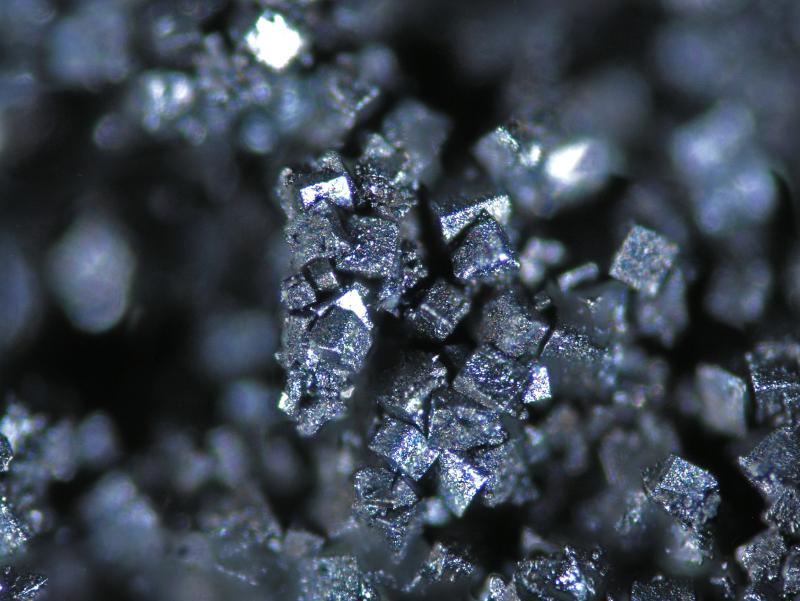
|
| Description: |
Chalcocite
Las Cruces mine, Gerena, Seville, Andalusia, Spain
4 mm crystal.
Beautiful chalcocite crystal on calcite. The bests crystals have been recovered from recrystallization on fractures and hydrothermal veins, usually covered with carbonates. |
|
| Viewed: |
21705 Time(s) |
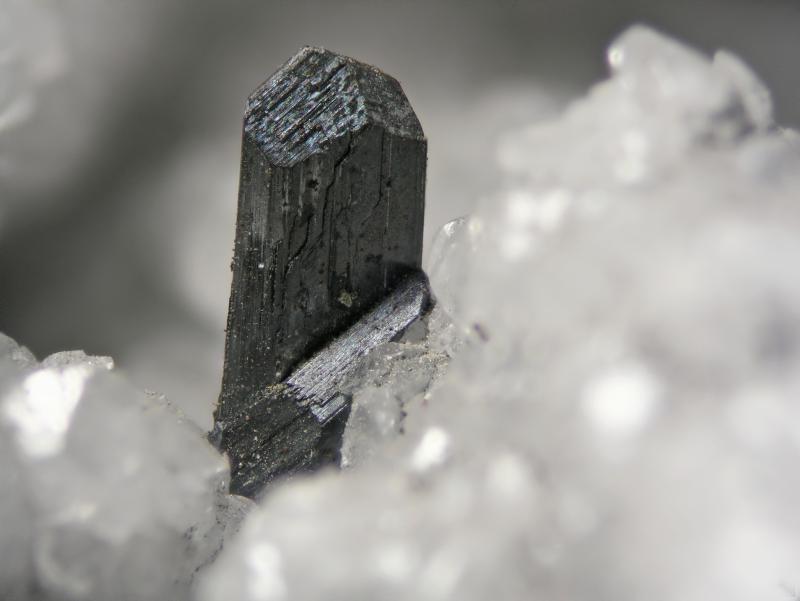
|
| Description: |
Harmotome
Las Cruces mine, Gerena, Seville, Andalusia, Spain
FOV 2 mm
This low temperature barium zeolite is widespread along the hydrothermal veins and fractures that cut the secondary enrichment zone, giving clues on the complex processes that happened here. |
|
| Viewed: |
21727 Time(s) |
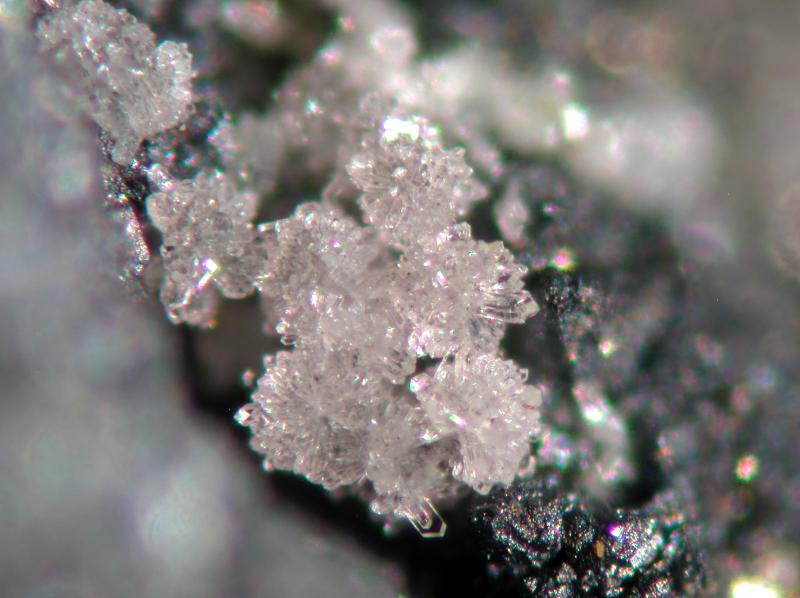
|
| Description: |
Harmotome
Las Cruces mine, Gerena, Seville, Andalusia, Spain
FOV 5 mm
Harmotome radial groups, with pearceite on chalcocite matrix. |
|
| Viewed: |
21746 Time(s) |
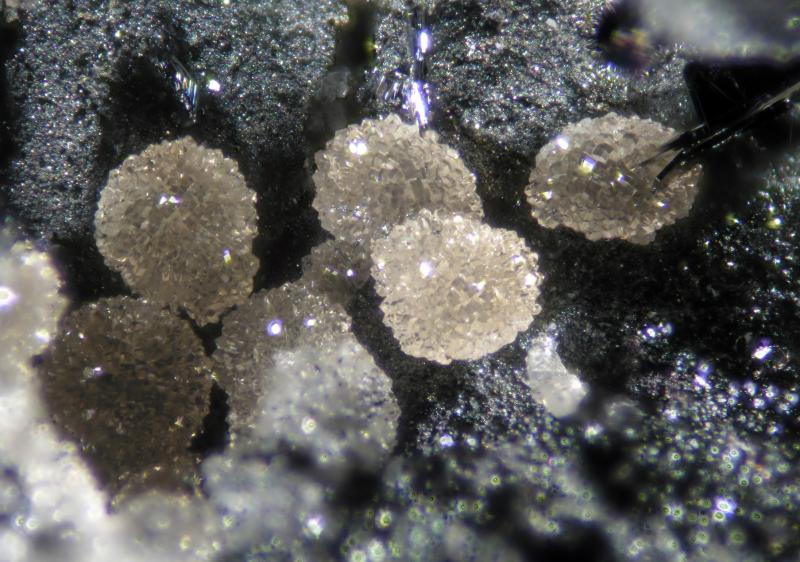
|
| Description: |
Tennantite
Las Cruces mine, Gerena, Seville, Andalusia, Spain
FOV 1.6 mm
The tennantite is a frequent mineral, although is rare in crystals higher than 1 mm. When crystallized, always form perfect tetrahedrons, usually covered with other minerals, in this case chalcocite in spheroidal groups of very tiny tabular crystals. |
|
| Viewed: |
21722 Time(s) |
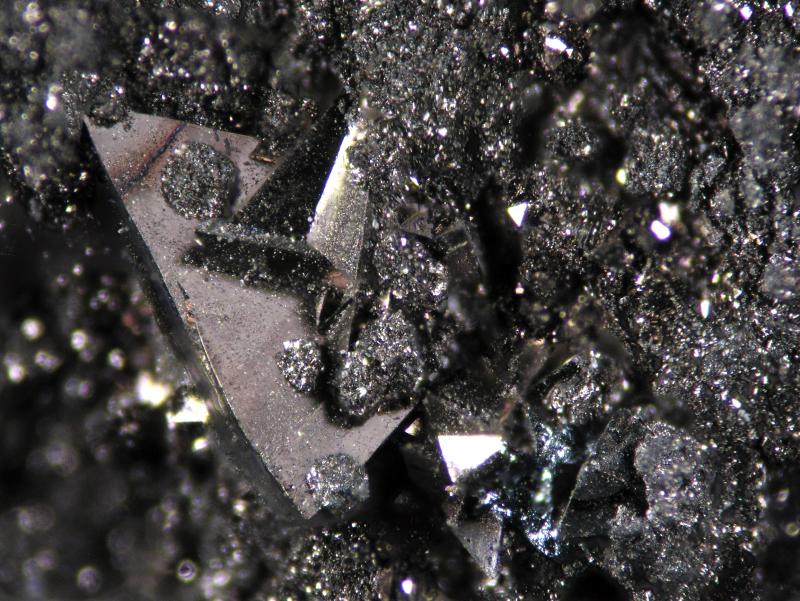
|
| Description: |
Galena
Las Cruces mine, Gerena, Seville, Andalusia, Spain
Fast Sulphur sobresaturation in a zone of the deposit lead to interesting galena forms. |
|
| Viewed: |
21729 Time(s) |
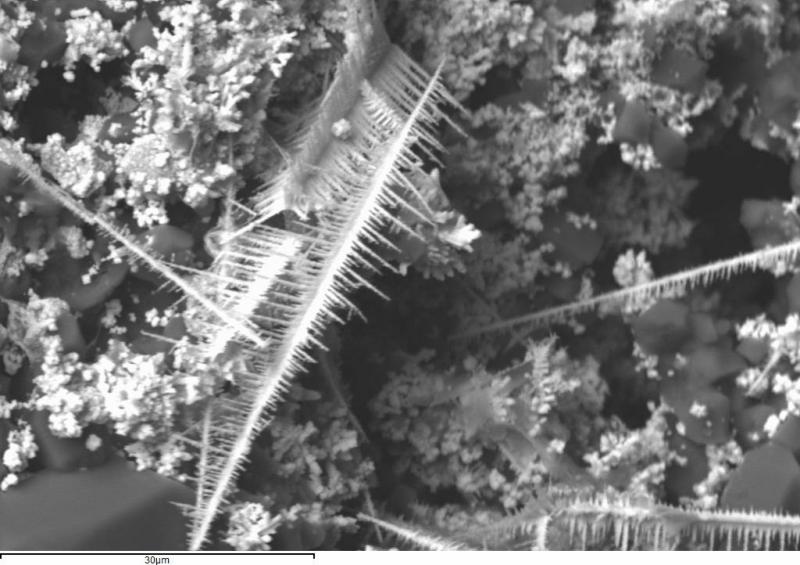
|
| Description: |
Silver
Las Cruces mine, Gerena, Seville, Andalusia, Spain
FOV 1.2 mm
Native silver is a very rare mineral in Las Cruces, as expected given the mineralization processes. But, is occassionally found as small wires, usually accompanied by proustite. |
|
| Viewed: |
21675 Time(s) |
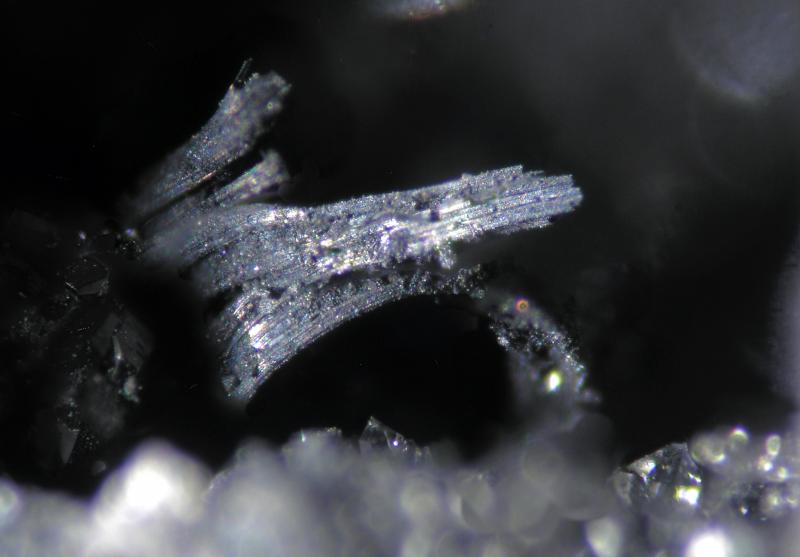
|
|
|
| Back to top |
|
 |
amigo
Joined: 03 Feb 2017
Posts: 1


|
 Posted: Feb 08, 2017 22:24 Post subject: Re: A Scientific and mineralogical trip to the Iberian Pyrite Belt - (6) Posted: Feb 08, 2017 22:24 Post subject: Re: A Scientific and mineralogical trip to the Iberian Pyrite Belt - (6) |
|
|
| hello, what a great site. Does anyone have any information or pictures of Lomero Poyatos mine. Australian mining company Winmar Resources has commenced drilling today. Would be very keen and interested if anyone could offer their thoughts on Lomero. Thankyou
|
|
| Back to top |
|
 |
Jordi Fabre
Overall coordinator of the Forum

Joined: 07 Aug 2006
Posts: 5025
Location: Barcelona



|
|
| Back to top |
|
 |
|





